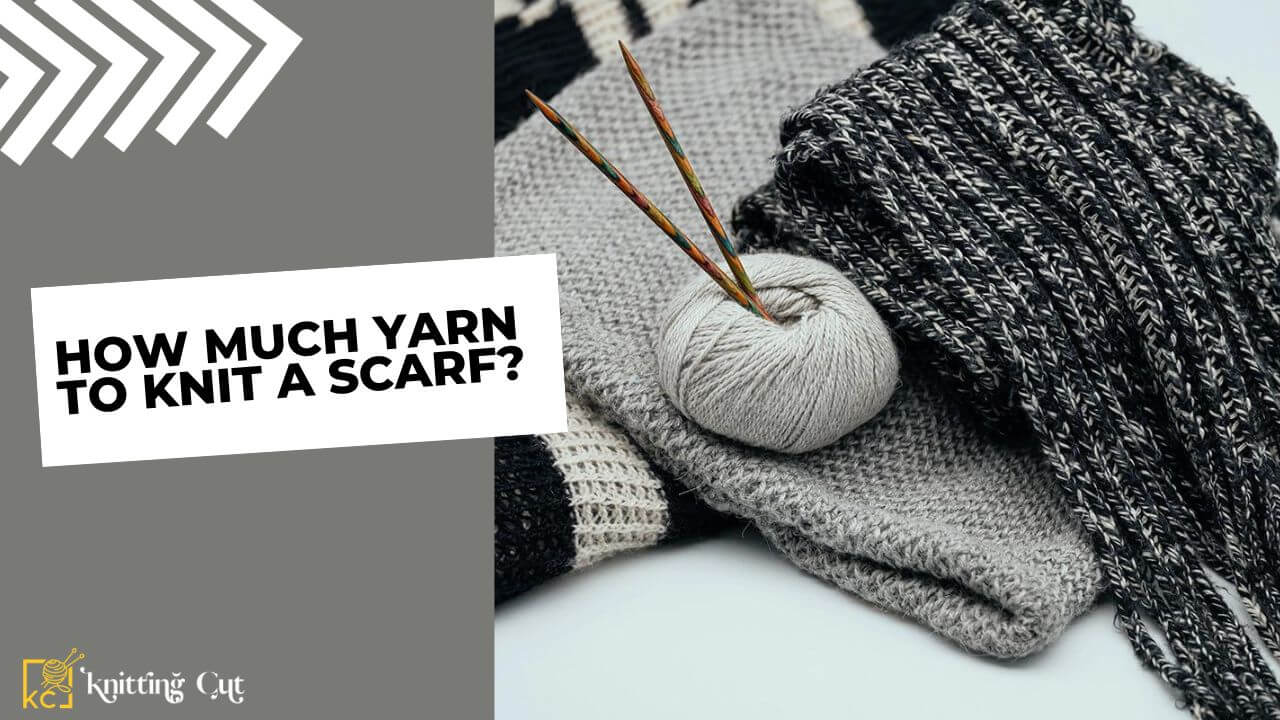Knitting a scarf can be a fun and rewarding hobby. However, figuring out how much yarn you’ll need for your project can be difficult. We will break down the factors that influence yarn requirements in this guide, allowing you to confidently begin your scarf-knitting journey.
Understanding Yarn Weight and Length
Before beginning any knitting project, it’s critical to become acquainted with yarn weight and length. Yarn weight is the thickness of the yarn, which affects how much you’ll need for your scarf. The total yardage of yarn in a skein or ball, on the other hand, is denoted by length.
Yarn Weight Categories
Yarn is classified by weight, ranging from lace weight to super bulky. A scarf requires a different amount for each weight. Lace weight yarns, for example, are thin and delicate, requiring more yardage, whereas super bulky yarns are thick and require less.
Choosing the Perfect Pattern
The pattern you select is critical in determining how much yarn you’ll need. Elaborate patterns with intricate stitches use more yarn than simpler designs. When estimating yarn requirements, consider the complexity of your chosen pattern.
Pattern Stitch and Tension
The stitch used in your pattern, as well as your knitting tension, have an impact on yarn usage. Tighter stitches require more yarn, whereas looser stitches may require less.
Also Read: How To Knit With Pom Pom Wool?
Considering Scarf Dimensions
The length and width of your scarf have a direct impact on yarn consumption. A longer, wider scarf will require more yarn than a shorter, narrower scarf.
Length and Width Factors
Before beginning any calculations, determine the desired length and width of your scarf. Keep in mind that some styles, such as infinity scarves or oversized wraps, will necessitate more yarn.
Delving into Yarn Fiber Content
The type of fiber in your yarn can have an impact on how much you’ll need. Wool, alpaca, and cotton are natural fibers that can be more efficient than synthetic blends, which are lighter.
Natural Fibers vs. Synthetic Fibers
Natural fibers and synthetic fibers are two distinct categories of materials
Natural fibers, being denser, generally require less yardage than their synthetic counterparts. Consider the benefits of each when making your yarn selection.
Factoring in Gauge Swatches
Making a gauge swatch is an important step in ensuring your scarf is the correct size. It allows you to change your knitting technique and needle size, which may affect the amount of yarn required.
The Significance of Gauge
Maintaining the specified gauge in your pattern ensures that your scarf matches the intended dimensions. Deviating from the recommended gauge may lead to either a surplus or shortage of yarn.
Calculating Your Yarn Needs
Armed with the knowledge of yarn weight, pattern complexity, and scarf dimensions, you can now proceed to estimate the amount of yarn required.
A Simple Estimation Formula
Multiply the required yardage per inch in your pattern by the intended dimensions of your scarf (in inches) to get an accurate estimate of the needed yarn.
Tips for Avoiding Shortages or Surpluses
To avoid the frustration of running out of yarn or having excessive leftovers, consider these practical tips:
- Purchase an extra skein to be safe.
- Keep track of your progress and adjust accordingly.
- Consider using a digital scale to monitor yarn usage.
Conclusion
Knitting a scarf is not just a creative endeavor but also a lesson in precision and planning. By understanding the nuances of yarn weight, pattern selection, and scarf dimensions, you can embark on your project with confidence, knowing you have the right amount of yarn at your disposal.
Also Read: Knitting Patterns Lace Weight Yarn
